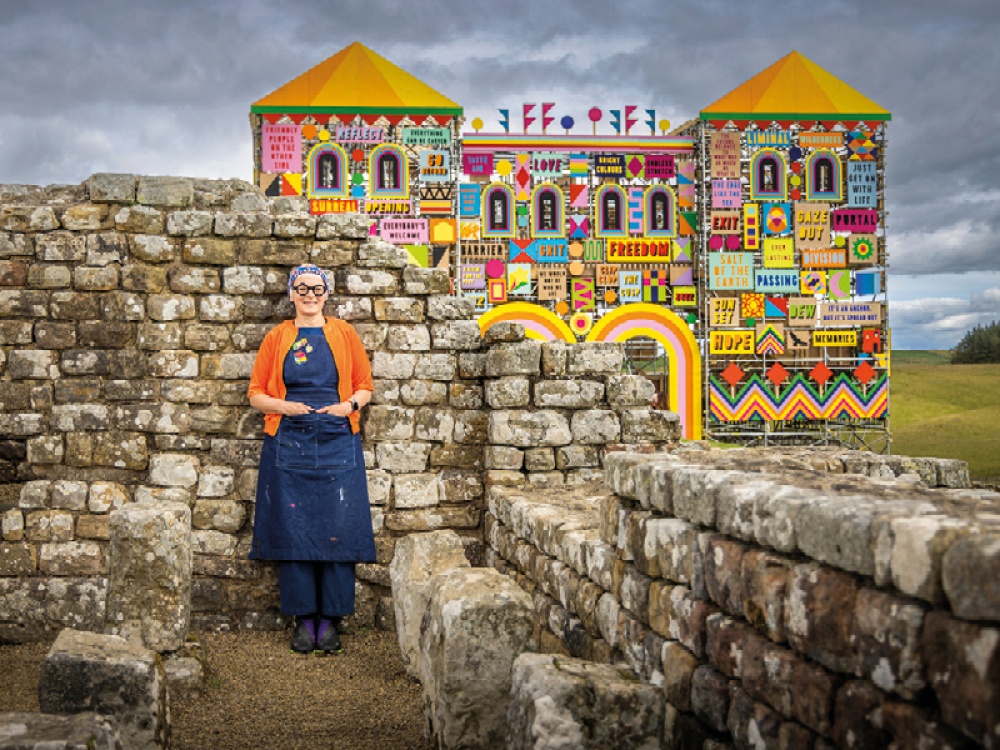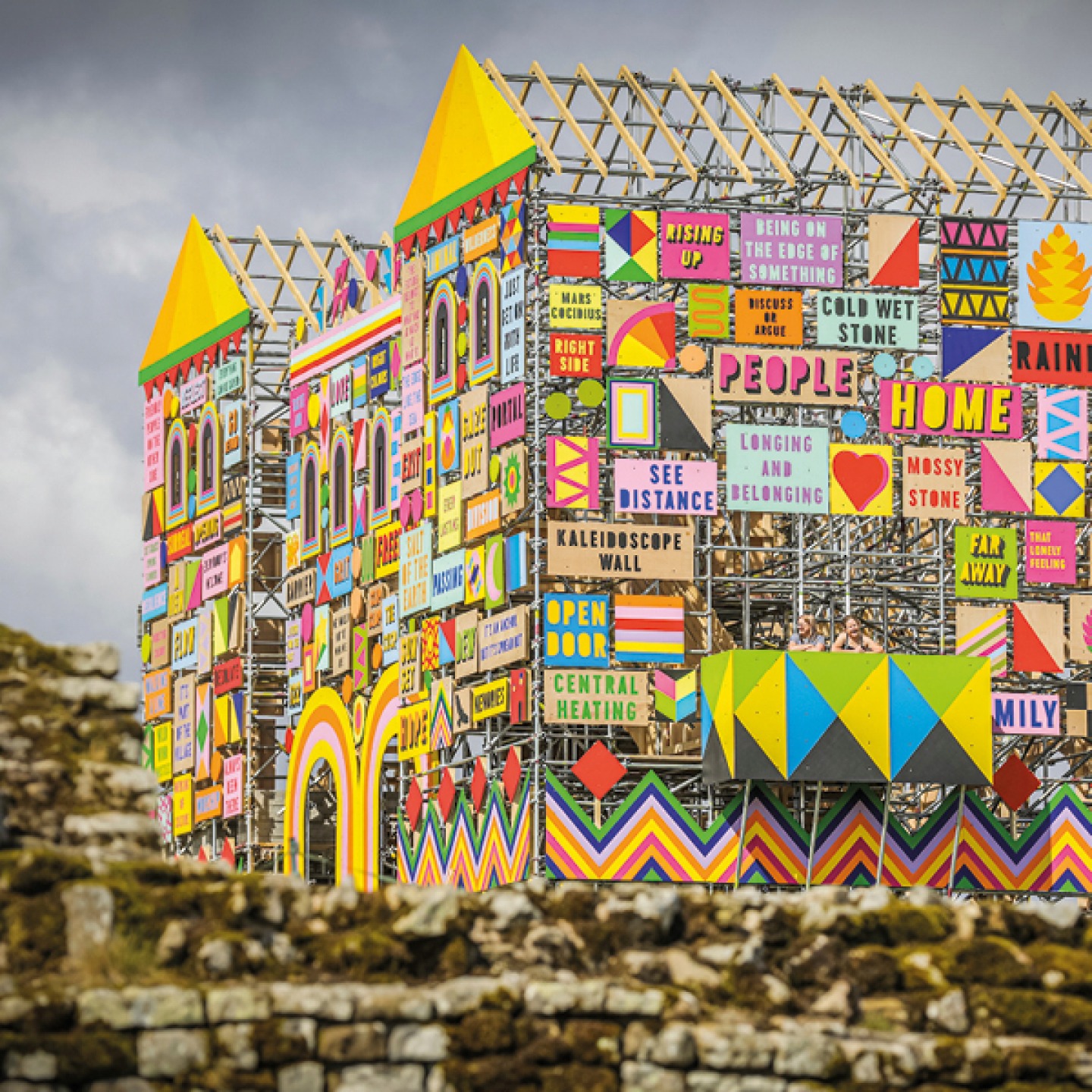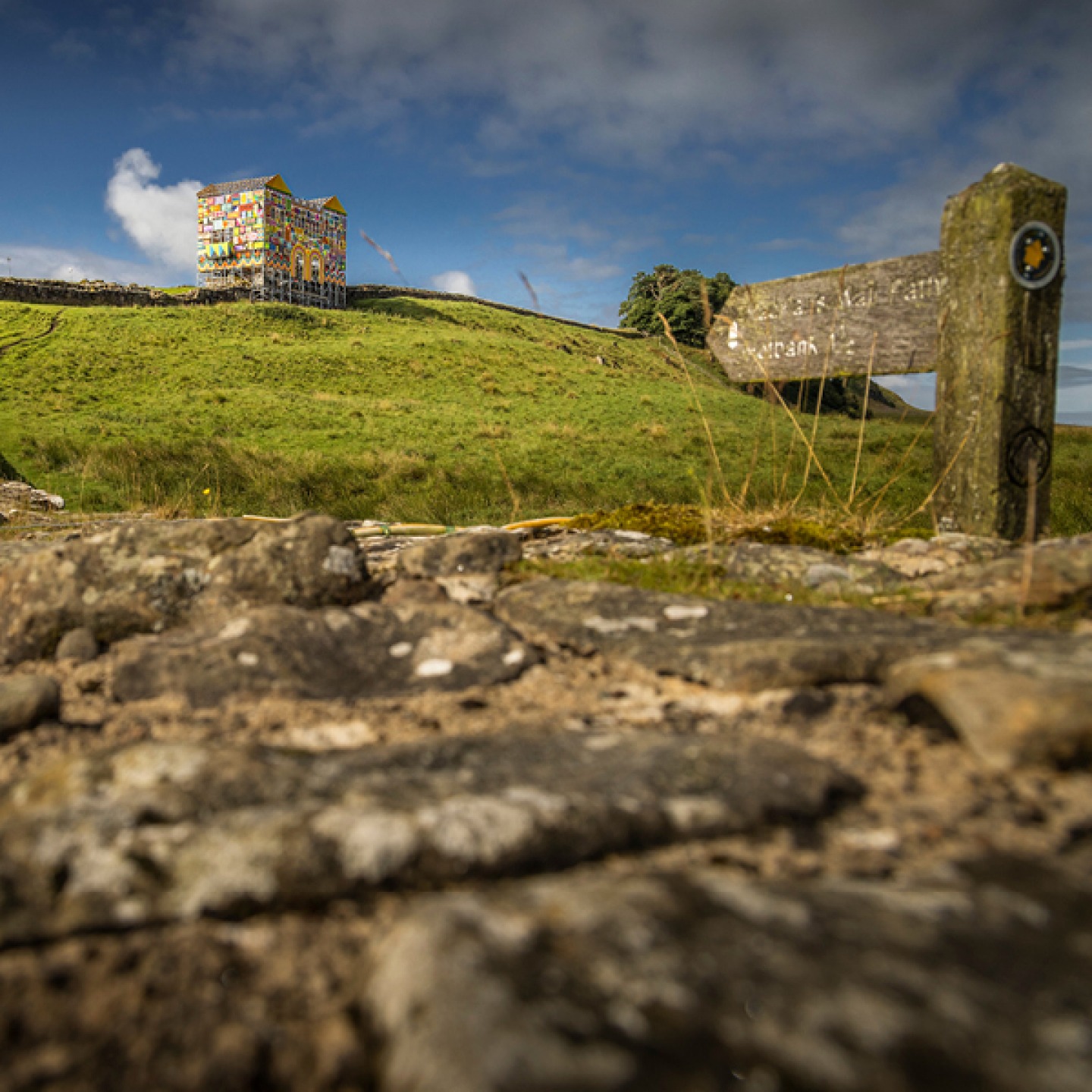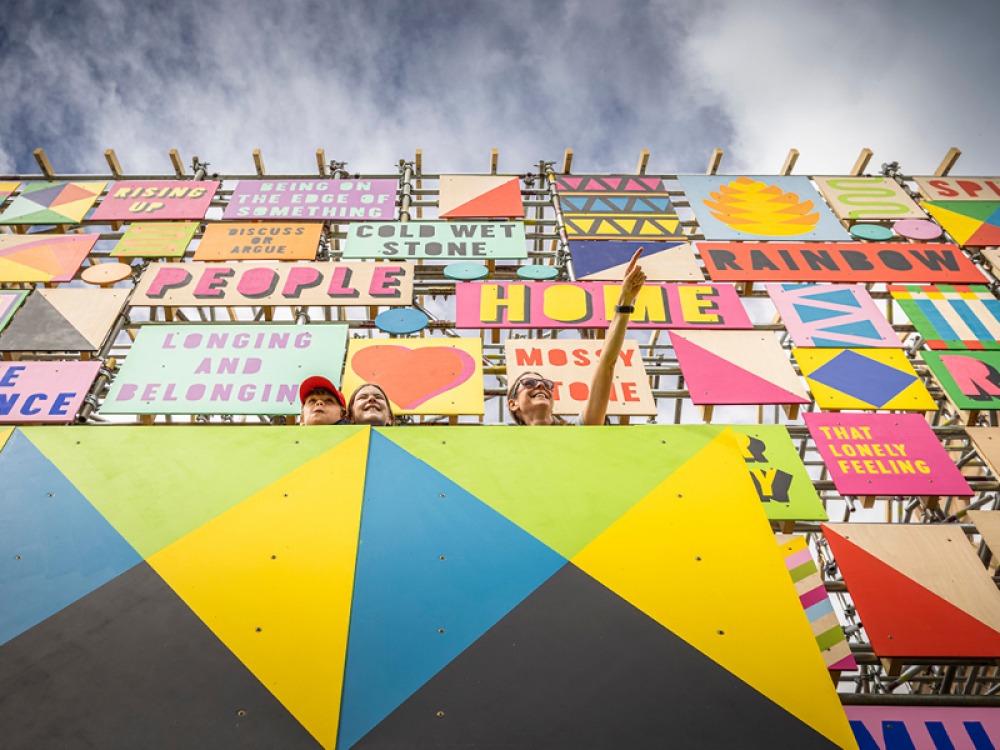The Colourful Art Installation That's Been Erected to Celebrate Hadrian's Wall's 1900th Anniversary

To celebrate Hadrian’s Wall’s 1900th anniversary, Morag Myerscough and local residents have helped reinvent and rebuild the North Gate at Housesteads Roman Fort, opening up views from a perspective that was last experienced 1,600 years ago
A vital base for the Roman Army, the soldiers based at the fort had a barracks block, a hospital, a commander’s house, granaries and communal toilets (all of which you can still see the remains of today). Housesteads was one of 16 permanent bases along Hadrian’s Wall, and today it is the most complete example of a Roman fort in Britain.
‘The moment I saw Housesteads and started walking around the fort I had an overwhelming feeling of wanting to make an installation here,’ says artist Morag Myerscough. ‘I stood in the remains of the North Gate and I looked at the wilderness that appeared to be unchanged since Roman times, and I knew immediately this was the place.’
Despite being born-and-bred in the city, and with much of her artwork displayed in urban areas, Morag enjoys the wild countryside. ‘Even just staying in that environment has been lovely,’ she says. ‘Housesteads is almost the same distance to Newcastle as it is to Carlisle – it’s an interesting part of the country that is very different on either side, which is fascinating.’
Adding a splash of colour to this historic fort, the temporary installation entitled ‘The Future Belongs To What Was As Much As What Is’ stands in the exact same spot that the North Gate once stood. Using scaffolding, the installation has been erected to the same height as the original to echo the views the Roman soldiers will have experienced, and has been decorated with Morag’s signature colourful artwork using words and ideas from local groups, and with help from Newcastle poet Ellen Moran.


‘I work a lot with communities, and from the very outset I was very much focused on the fact that the work would be made together with the communities along Hadrian’s Wall,’ says Morag. ‘It was a collaborative piece of work.’ Morag ran workshops with English Heritage historians and curators to encourage community groups (including a Parkinson’s dance group from Carlisle, Northumberland rural home educators and members of Carlisle’s Prism Arts) to share their thoughts and opinions on the wall.
‘In the workshops, the really key thing for me was to discuss with all the different groups what the wall meant to them,’ Morag continues. ‘I, like many others, was a visitor to Hadrian’s Wall. My thoughts were valuable as a visitor, but the most important thing was that the words on the fort were from locals (rather than my own opinion). I go into workshops very open-minded. I let conversations flow to see what people say and I don’t ever force anyone in a particular direction. Having Ellen there with me meant it was a really lovely collaboration. Some people just wanted to talk about why they liked the feel of the stone and some said it was important that it was built on the gateway. Others talked about barriers and about the length and height of the wall. These words were formed into placards showcasing the different voices.
‘The women from the Parkinson’s group were the ones who fascinated me the most and it was really interesting to talk with them about their view on life by the wall. When we talked with the home educators, that was fascinating because both teenagers and younger children had different views, and the Prism Arts group loved the bright colours. There was an amazing energy in the room between them and their carers. I learned so much about people and their sense of belonging, which is an area that my work is often structured around. Belonging is always different to different groups of people.’

The brightly coloured wooden placards (many of which were painted by local communities in the workshops after Morag sketched out their words) form the outer shell of the artwork, over a large-scale scaffold frame. ‘Romans loved inscriptions and making their mark to show people they had been there, and that’s sort of what we’ve been doing with these words. Everyone’s name is on the structure as well. It is brightly coloured and some may say it dominates the landscape, but that’s what the fort was there for. It was a dominant piece of architecture. Could you imagine in 122: would anybody have seen a building of that structure and that size before? It must have been phenomenal; like something that had landed from outer space,’ Morag laughs.
‘As you can tell, I am just totally fascinated by the history and the people and the landscape. Everything has come together. There’s involvement from start to finish which is important to me. Some people found the creative workshops interesting but also quite nerve-racking because it may have brought them outside of their comfort zone, but having their words and their painting as part of the piece means they can see that they have collectively made this huge piece of artwork.’
It’s hoped that placing such a bold installation in this ancient landscape will not only capture people’s imagination but also challenge their ideas of what the wall was for (not just a means of keeping people out, but also a frontier that people could cross).
Morag says building on the wall feels like ‘a very profound moment’ in her career. ‘When you think about it, it is something that hasn’t actually been done since the Romans,’ she says. ‘Although it’s very brightly coloured on the outside, when you go inside, you see all the natural wood and when you look out, the views are the same as those the Roman guards would’ve been looking out at all those centuries ago, and no-one has seen them from the same perspective since. It was this wilderness of the landscape that completely captivated me to put this work here.
‘Anybody who has visited just absolutely loves it because you can go inside. You can look down and see the remaining stones of the North Gate and can see the footprint of the gate underneath you. It’s so important to keep that physical contact with the original wall. I never wanted to cover it up; it’s about enhancing and embracing it and helping people see it from a different perspective.’
As part of the Hadrian’s Wall 1900 Festival,The Future Belongs To What Was As Much As What Is is open to the public until 30th October 2022, after which the structure will be completely removed and the placards will be offered to the community members who painted them.
All Images © English Heritage







